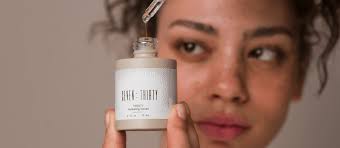
Do I Need a Serum and a Moisturizer? Dermatologists Break It Down
One of the most common questions I get from patients and followers is, “Do I really need both a serum and a moisturizer? Or can I pick just one?” The simple answer: For most skin types, you do need both.
But it’s not a one-size-fits-all. Some skin types, especially very oily skin, can sometimes skip the moisturizer.
This guide will explain the key differences between serums and moisturizers, how they work, and how to use them based on your unique skin type.
What Is Your Skin Type?
Before diving into the details, it’s important to know your skin type. Different types absorb and react differently to products.
Take a simple quiz or consult a dermatologist to identify if your skin is dry, oily, combination, sensitive, or something else. This will help you select the right products and routine.
Serum vs. Moisturizer: What’s the Difference?
People often confuse serums and moisturizers because their textures can seem similar. But they serve very different purposes in your skincare routine.
Serums are lightweight and packed with concentrated active ingredients. They target specific skin concerns such as dark spots, acne, fine lines, or dullness.
For example, a vitamin C serum brightens skin, while peptides and growth factors boost collagen to reduce wrinkles.
On the other hand, moisturizers tend to be thicker creams or lotions. Their main job is to hydrate your skin and lock in moisture.
Some moisturizers also strengthen the skin’s natural barrier, preventing irritants and allergens from penetrating.
In essence:
Serums deliver powerful actives deep into the skin.
Moisturizers protect and seal in hydration at the surface.
Why Do You Need Both?
Using both serum and moisturizer allows you to treat skin concerns effectively while keeping your skin healthy and hydrated.
Serums handle the targeted treatment, and moisturizers keep your skin barrier strong and hydrated.
For most skin types, layering serum first, then moisturizer, maximizes absorption and benefits.
Benefits of Serums
Serums are a vital part of your skincare because:
They deliver concentrated active ingredients tailored to your needs.
Their lightweight texture makes them ideal for layering without feeling heavy.
They target problems like acne, hyperpigmentation, fine lines, or redness.
They come in formulations suited for all skin types and concerns.
Common serum ingredients include vitamin C, niacinamide, peptides, hyaluronic acid, and retinoids.
Benefits of Moisturizers
Moisturizers have their own crucial roles:
Hydrating the skin and preventing dryness.
Reinforcing the skin’s protective barrier to lock in moisture.
Providing a layer of occlusion that seals in all the goodness from serums.
Some formulas reduce redness and calm irritation.
Moisturizers also help your skin better absorb other products.
For skin barrier repair, some moisturizers mimic the natural lipid ratio of healthy skin to strengthen protection.
When to Combine Serums and Moisturizers
Since serums and moisturizers serve different purposes, combining both is usually the best approach for healthy skin. How you layer and which products you choose will depend heavily on your skin type.
Dry Skin Types: Use Both Serum and Moisturizer
Dry skin typically lacks natural oils and lipids, leading to roughness, tightness, and flaking. For dry skin, a barrier repair moisturizer is a must.
It restores lipids and seals in moisture, keeping skin smooth and supple.
Pair this with a serum that targets your specific concerns. Hydrating serums with hyaluronic acid, anti-aging peptides, or calming ingredients work well to add extra moisture and repair.
Some popular options for dry skin include:
Serums: Hyaluronic acid serums, vitamin C serums, calming serums with ceramides.
Moisturizers: Creams with ceramides, squalane, or natural oils that strengthen the barrier.
Oily Skin Types: Serums Can Sometimes Stand Alone
Very oily skin types often produce enough natural oils, so they may get away with just using a serum, especially if their skin isn’t dehydrated.
For those with slightly oily or combination skin, a light moisturizer is still beneficial. Opt for one that is humectant-based (pulls water into the skin) rather than occlusive-heavy (which can clog pores).
Serums for oily skin often include antioxidants, niacinamide, and skin-calming ingredients to reduce shine and inflammation.
Good choices for oily skin:
Serums: Niacinamide, vitamin C, salicylic acid, antioxidants.
Moisturizers: Lightweight gel formulas or water-based moisturizers.
How to Layer Serums and Moisturizers
The best way to apply these products is to start with your serum. Serums are lightweight and penetrate deeply, so applying them first allows maximum absorption.
After the serum has settled, apply your moisturizer on top to seal in hydration and protect the skin barrier. Applying moisturizer before serum can block absorption and reduce the serum’s effectiveness.
In some cases, when introducing a potent new serum ingredient, applying moisturizer first can buffer irritation, but this is the exception rather than the rule.
The Bottom Line: Why Use Both?
Using both a serum and a moisturizer gives your skin a one-two punch: serums deliver targeted treatments while moisturizers hydrate and protect.
Together, they support skin health and address your unique concerns more effectively than either product alone.
How to Choose the Right Products for Your Skin
To pick the best serum and moisturizer, start by knowing your skin type. There are 16 distinct skin types when you combine dryness, oiliness, sensitivity, and other factors.
Once you know your type, choose products formulated for your needs.
For example, sensitive skin benefits from gentle serums with calming ingredients, while mature skin may need anti-aging serums with peptides and moisturizers rich in lipids.
Tips for Building a Serum + Moisturizer Routine
Cleanse your skin thoroughly before applying products.
Apply toner or essence if you use one, then apply serum.
Let the serum absorb for a minute or two.
Follow with moisturizer to lock everything in.
Use sunscreen during the day as the final step.
Common Myths About Serums and Moisturizers
Myth: You don’t need both, one product is enough.
Fact: Most skin types benefit from both due to their distinct functions.
Myth: Serums replace moisturizers.
Fact: Serums often lack the occlusive ingredients needed to prevent moisture loss.
Myth: Moisturizers can deliver actives as well as serums.
Fact: Serums are designed to have higher concentrations of actives for deeper skin penetration.
Final Thoughts
Your skin’s needs evolve over time, so your routine should too. Using a serum and a moisturizer tailored to your skin type can improve texture, tone, and overall health.
If you’re unsure about your skin type or which products to use, a dermatologist can provide personalized recommendations.
Start simple, be consistent, and watch your skin transform.


